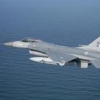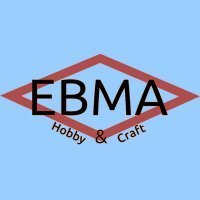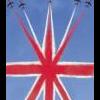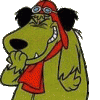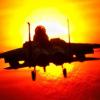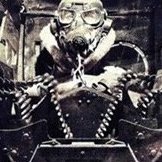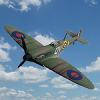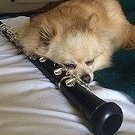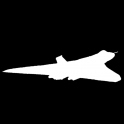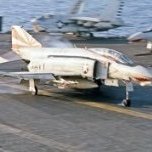-
Posts
4,609 -
Joined
-
Last visited
-
Days Won
3
jrlx last won the day on September 14 2018
jrlx had the most liked content!
About jrlx

- Birthday 02/03/1969
Profile Information
-
Gender
Male
-
Location
Lisbon, Portugal
-
Interests
Military aviation, all ages, in 1/72
Recent Profile Visitors
10,471 profile views
jrlx's Achievements

Very Obsessed Member (5/9)
6.7k
Reputation
-
Hi again, This is the remaining post for bringing the thread up to date. It shows work done in Nov.-Dec.2021. I devised a solution for the intake tubing, comprising two pieces of 0,13mm-thick plasticard. The first piece is shown below for the port wing and makes up the outboard side of the tubing: IMAG7502 The following pictures show the installation of the outboard tubing on the starboard wing (I didn't take a picture of the installation of the equivalent piece on the port wing): IMAG7500 IMAG7501 Next, I installed the inboard piece of the tubing: IMAG7503 IMAG7504 The inboard piece of plastic will be adjusted after glueing the wings to the fuselage. Wings on: IMAG7505 IMAG7506 After glueing the wings, the intake tubing was finally adjusted: IMAG7508 IMAG7510 IMAG7511 With the most difficult phase of the build behind, I glued the horizontal stabilisers in place: IMAG7532 IMAG7533 One of the worst points of the kit is the detail-less shallow wheel wells. There's a lot of detail visible in the walkaround pictures in primeportal (unfortunately, unreachable right now). I tried to add some detail using pieces of plastic and copper wire. Starting with the nose wheel well, there's a nasty seam along the fuselage halves: IMAG7535 First, I glued in place a piece of plasticard: IMAG7536 The locating holes for the nose gear were drilled out and pieces of copper wire were glued in place, bent and with pieces of masking tape wound up in order to simulate some of the detail that can be seen in the walkaround pictures: IMAG7538 Detail was also added to the main gear wells in a similar manner: IMAG7543 That's all for now. Hopefully, I'll be able to carry on with this build in a couple of months. Cheers Jaime
-
Hi again, I've been away from BM as an active contributor for a long time now because I haven't done any modelling for a while. I intend to resume work on my shelf of doom in January but I still have some updating to do on a few WIP threads. This is one of them. The work below was done back in Jan-Mar. 2021. As said in a previous post, the intake tubing was a blocking point in the build. While I was thinking about a possible solution, I went on with the build doing other things. I removed the canopy parts from the sprues: IMAG7162 Next, I scribed missing panel lines on the wings' undersurfaces: IMAG7188 I also looked for and found a PE replacement for an antenna that will be installed on the underside of the fuselage: IMAG7218 The main landing gear wheels were removed from the sprues: IMAG7219 To make the ejection marks disappear, I first glued pieces of plastic rods in the marks: IMAG7262 The main landing gear legs were test-fitted to check if there was enough space to add some detail to the wheel wells. Available space is limited but I'll try to add something anyway: IMAG7220 Small parts removed from the sprues: IMAG7239 The rockets were glued to their pylons: IMAG7241 The fuel tanks were assembled and the horizontal stabiliser parts were also removed from the sprues: IMAG7242 Next, it was time to install the exhaust parts in the wings: IMAG7243 Since there would be big seams inside the exhaust tubing, I decided to glue pieces of thin plasticard along the joins of the wing halves before glueing these halves together. Here are the lower halves of both wings with the pieces of plasticard glued in place: IMAG7261 I used a piece of sandpaper glued to a toothpick to blend the plasticard pieces with the interior surface of the exhaust tubing. This was done for the lower edge of the pieces before glueing the wing halves together and repeated for the top edges after, which was more difficult due to space limitations. IMAG7263 Wing halves glued together: IMAG7264 In the next post I'll show how I did the intake tubing and I'll finish updating the thread. Cheers Jaime
-
Hi again, I've been away from BM as an active contributor for a long time now because I haven't done any modelling for a while. I intend to resume work on my shelf of doom in January but I still have some updating to do on a few WIP threads. This is one of them. The work below was done back in July and August. The lateral windows were glued in place. The fit was flimsy and the gaps were filled in with Revell Contacta Clear: IMAG7637 While the glue cured, I glued the engine faces in place. A lot of work will be needed to remove all the seams, steps and gaps: IMAG7638 I decided to mask the windows with the fuselage still open, so that I could glue back in place any window that I pushed in by accident in the process. Strips of masking tape were applied: IMAG7639 ... and the excess was removed using a sharp nº 11 blade: IMAG7640 The cockpit was glued in place: IMAG7641 The instructions recommend using 20g of weight on the nose, to avoid a tail seater. I used lead shot held in place by milliput. Since the nose didn't have enough space for all the shot, some was installed under and right behind the cockpit: IMAG7642 Before painting the milliput and lead with interior grey, I masked the inside of the windows and the cockpit: IMAG7645 Here's the result after painting: IMAG7648 Finally, the fuselage halves were glued together: IMAG7653 Next, I glued the cockpit front windows in place and decided to paint black the weight in the nose: IMAG7655 The alignment of the fuselage halves in front of the cockpit was poor. So, I inserted a piece of sprue in the front opening to force a better fit while the glue cured: IMAG7656 The fit of the front window is also quite poor and the gaps were filled in with Revell Contacta Clear. IMAG7657 A lot of work on the seams and gaps will be needed. The WIP thread is now up to date. Cheers Jaime
-
Hi again, I've been away from BM as an active contributor for a long time now because I haven't done any modelling for a while. I intend to resume work on my shelf of doom in January but I still have some updating to do on a few WIP threads. This is one of them. The work below was done back in August. After closing the fuselage, I had to finish the instrument panel and install the canopy. As can be seen in the next picture, the seams on the IP face and cowling need attention. IMAG7646 In order to allow for an easier application of the IP decal, I decided to apply a piece of thin plasticard sheet: IMAG7647 Result after cutting to shape: IMAG7650 The seam on the cowling was filled in with PPP: IMAG7651 IMAG7652 After painting, the seam was still visible, so another application of PPP was needed: IMAG7658 I still haven't removed the PPP to check if the seam is now invisible. Along these steps, I had painted the IP face black and applied the IP decal but found that the IP face should be painted white so that the instruments on the decal could be visible. I managed to remove the decal and return it to the decal sheet before it dried in place: IMAG7654 So, I painted the IP face white and also used the white paint as primer for the parts that will be latter painted yellow: IMAG7649 The thread is now up to date. Hopefully, I'll get back to this build after the New Year festivities. Cheers Jaime
-
Hi @Scooby, Thanks for your interest and for the real life details of operating these aircraft. I'm very sorry to know about the loss of the 807 aircraft and crew... Just a question: was it usual to fit these aircraft with floats instead of a regular landing gear? Or there were a few permanently fitted with floats? I ask this because I couldn't find a picture of the 806 box art aircraft with floats but I found pictures of 802 in both configurations. Cheers Jaime
-
Hi again, Continuing with the thread update. Due to the kit's age, the interior detail is basic. Since the cabin doors will be closed, only the seats and instrument panel will be visible through the front windows. So, I decided to make seatbelts to provide some detail to the seats. The belts are done from painted masking tape and fine copper wire bent to shape for the buckles. I started by cutting 1 mm-wide stripes on a piece of masking tape glued to the cutting mat. These stripes were painted medium grey: IMAG7596 Here we can see some of the buckles, already shaped to form: IMAG7609 After installation of the seatbelts on the seats, I used a 1 mm-thick Liquid Chrome pen to paint the buckles: IMAG7613 There's a decal for the instruments on the central console between the seats. Here's the set-up for applying the decal: IMAG7603 After application of the decal and installation of the seats, here's the result: IMAG7614 Before closing the fuselage, I decided to apply masking tape to the lateral windows. Since these clear parts were held in place by filing around the gaps with clear glue, it would be risky to apply the masking with the fuselage already closed. So, I covered the clear parts with pieces of masking tape, and cut the tape to shape with a sharp modelling blade: IMAG7615 IMAG7616 The parts making up the fuselage underside where the main wheels will be installed, were also glued together. Some filler will be needed: Next, the cockpit and cabin base was glued to the inner side of one of the fuselage halves and the fuselage was closed. The previous sub-assebly was also glued to the underside of the fuselage: IMAG7628 IMAG7629 The main engine cover parts were glued together. The fit is nothing to cheer about: IMAG7631 Next, the nose was glued to the fuselage: IMAG7632 The holders for the torpedoes were also glued in place: IMAG7633 Finally, here's a view of the underside: IMAG7634 That's all for now, the thread is up to date. Thanks for looking Jaime
-
Hi again, I didn't manage to finish this build in the Matchbox GB, which is perfectly normal with me... The build is now in the Aircraft WIP area, where I'll press on till it's finished. I did progress a bit during the GB, though I didn't manage to update the thread. I'll do it now. I started work by removing the fuselage parts off the sprues. The panel lines in this kit are represented by raised lines, so I rescribed them. The following picture shows the rescribed lines on the fuselage half on the top area of the picture. The fuselage half on the bottom still has the original raised lines: IMAG7580 The bulkheads behind the cockpit and behind the passenger cabin were glued in place: IMAG7589 Next, the interior was painted medium grey: IMAG7601 The cockpit parts were also painted: instrument panel, cockpit base, control column and seats: IMAG7602 There are decals for the instrument panel and seatbelts. Here's the set-up for applying the decals: IMAG7604 The decals were applied. The instrument panel decal doesn't correspond exactly to the raised detail on the instrument panel part: IMAG7617 and the cockpit parts were glued together: IMAG7618 Next step: assembling the wings and engines. First, the raised panel lines were rescribed, after which the wing halves were glued together: IMAG7624 Then, the engine cowlings where glued in place: IMAG7625 As can be seen, fit of the parts could be better and some filling with putty and sanding will be needed: IMAG7626 IMAG7627 Thanks for looking. Jaime
-
Hi all, As usual, I didn't finish the build in the GB. I did progress a bit more during the GB but I didn't manage to update the thread. I'll do it now, and keep pressing forward till I finish the build. After all, it's not such a complex kit... In a previous post I said the doors couldn't be installed after gluing the top part of the fuselage (i.e.: the main engine cover). Therefore, I decided to glue the doors in the closed position: IMAG7571 IMAG7572 Next, I glued the parts making up the main rotor: IMAG7573 IMAG7594 Lead weights were inserted in the nose, being kept in place by Milliput: IMAG7574 IMAG7575 The interior was latter painted matte black. A new dry fit shows that the model is now comfortably a non-tail seater: IMAG7576 Next, I painted the interior of the model matte black. Here is the cockpit and passenger cabin base: IMAG7600 I also painted black some smaller parts. The pilot seats were painted medium grey: IMAG7598 Inspection of the clear parts shown that there are moulding lines inside the parts. These defects are not superficial and cannot be removed, so I have to live with them: IMAG7591 IMAG7592 The clear parts were bathed in Alclad Acqua Gloss and left to dry for a few days. Next, I glued the lateral windows in place. The parts are slightly smaller than the openings, which didn't help. I had to use some Revell Clear glue as filler around the parts to keep them in place: IMAG7593 Thanks for looking Jaime


